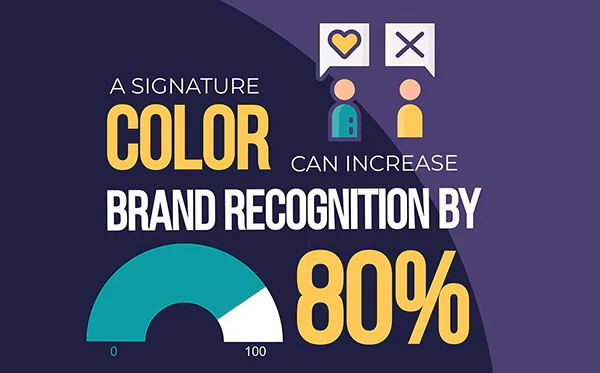You know, people will always judge a book by its cover and your business and brand identity are the same.
The world of business can be pretty competitive and setting up a strong and consistent brand identity is the key to your company’s success.
For this, mockup templates can be pretty powerful tools to help in visualizing your brand elements, maintaining brand consistency, and improving business growth.
So, no matter if you are new to packaging mockups, or just looking to launch a new product line, this guide will help you tailor mockup templates seamlessly to your business branding.
The Impact of Brand Consistency
If you think about it, the main purpose of any branding is to attract customers and to stand out among a sea of other brands.
Why, you ask?
Branding is a tool that can help a business build trust and recognition with its audience.
But still, it needs to be pretty memorable to even leave a mark on the customer’s consciousness, and to make this possible, businesses need to keep making consistent efforts at all points where their brand is displayed.
One way to achieve this is by tailoring your designs, templates, or product packages to your brand’s identity.
DID YOU KNOW?
According to a survey by Lucidpress, a consistent brand presentation can increase revenue by up to 33%. This statistic shows how much impact brand consistency can have on your business’s success.
Let’s look at more impacts consistent branding can have on your business.
Consumer Trust and Loyalty
We all know that consistency pretty much builds trust.
So when a customer comes across a brand that maintains a uniform presentation across various touchpoints (from the website to social media and packaging), it instills them with confidence.
A report by Forbes reveals that 82% of consumers trust a company more when their brand image is consistent.
Recognition and Recall
Consistent branding also makes it easy for one to recognize and recall a brand.
Just take a look at the iconic Coca-Cola logo, it’s not easy to forget and you can point it from a mile away.

This is all possible due to the nature of the human brain, which is wired to respond positively to familiarity.
According to a study by the Journal of Consumer Research, consistent branding improves the likelihood of consumers remembering and choosing a brand during their buying decisions.
Competitive Differentiation
So, when you look at a crowded market, differentiation is pretty much the key.
A McKinsey & Company analysis highlights that a consistent brand experience across various channels can set a business apart from its competitors, providing a unique selling proposition that resonates with consumers.
The goal here is to keep an unwavering consistency so that customers can easily point you out in a crowd.
Emotional Connection
Besides, consistency can also create a deeper emotional connection between a brand and its audience.
When customers consistently encounter a brand that aligns with their expectations, preferences, and values, it establishes an emotional bond.
This emotional connection plays a pivotal role in long-term customer loyalty.
Beyond aesthetics, brand consistency is all about touching the core of consumer behavior, influencing trust, and earning loyalty.
How to Build Your Brand with Mockup Templates
Mockups are like the virtual version of a physical product or service.
They are used to communicate the look or feel of the product during marketing or the development phase.
They are also used to test design ideas and get feedback from stakeholders.
As a business owner, you must already use mockups, one way or another.
It could be anything, like a business card shared on social media or a clothing mockup to showcase your new merch.
So, whatever the case may be, these tools have the power to go beyond representing a product
They can influence consumer sentiments about a brand too.
To turn mockups from a simple 3D rendering of a product to a powerful branding asset, you must know how to tailor this design asset to fit your brand identity.
On a platform like Yellow Images, you get mockup templates in .psd format which allows you or your designer to export to Photoshop and work the magic.
Creating a mockup design that maintains brand consistency is truly easier than you think if you follow the simple rules of branding and design.
Let’s look at them:
Use Color Psychology
Colors can have a pretty profound effect on a person’s emotions and perception.
This makes them a necessary aspect of brand identity.
When customizing your mockup templates, leverage color psychology to evoke specific emotions associated with your brand.

Research from the Institute for Color Research reveals that people make a subconscious judgment about a person, environment, or product within 90 seconds of initial viewing, and between 62% and 90% of that assessment is based on color alone.
Understand the cultural and psychological connotations of different colors, ensuring that the chosen templates align with your brand’s intended emotional response.
For example, if you want your brand to be associated with feelings of healthiness, ethics, and eco-friendliness, you’d want to use warm, earthy colors like green or brown.
By applying these techniques to the template customization process, you not only create mockups that visually represent your brand but also resonate with the target audience on a deeper level.
Logo Placement and Integration
You know, how a logo is integrated with a mockup template can pretty much affect the brand’s visibility.
For the best results, analyze user engagement data to determine optimal logo placement that attracts attention without overshadowing other key elements.
A well-placed logo reinforces brand recall and fosters a connection with your audience.
Typography Consistency
If a business wants to keep up a consistent visual language across all its brand touchpoints, it needs to use consistent typography too.
It’s recommended that you use fonts and typefaces that resonate with your target audience.

For example, if a brand caters to children, it might find it more successful to use more colorful and eye-catching themes.
Using the right typography is necessary for reinforcing brand recognition and readability.
Image Selection Based on Audience Preferences
For the final touch, use images that align with your customer preferences.
How will you know?
It’s pretty simple, you need to analyze all of your social media engagement metrics related to previous visual content to identify themes, styles, and subjects that resonate most with the audience.
This data-driven approach ensures that the mockup images align with the preferences of the target demographic.
Conclusion
Creating a compelling and authentic representation of products and services is important for effective branding, and the use of mockup templates plays a central role in achieving this goal.
You can tell if your mockup is a branding success when it has fresh perspectives on your product, incorporates interactive elements, and seamlessly integrates with your brand identity.




